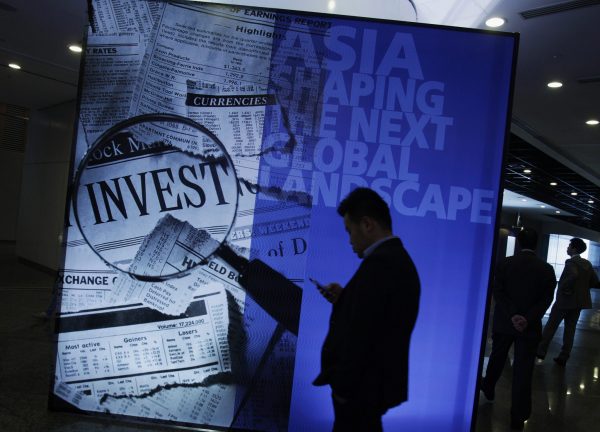The Chinese renminbi has plunged against the US dollar in 2018 — weakening more than the euro, but less than most other emerging market currencies like the rupee and rupiah. The renminbi and other currencies are weak because the dollar is strong. Rising US interest rates and strong US economic growth have attracted capital from the rest of the world, where growth is slowing.
China’s weakening economic growth — still expected to surpass 6 per cent in 2018 — is in part due to China’s attempts to reduce its large domestic debt burden through credit restraint. This has reduced domestic consumption and investment — two of the major components of gross domestic product (GDP) growth. Exports, another component, are threatened by Trump’s trade war.
To halt the growth slowdown, China has recently eased credit restraint and is encouraging more government spending, partly reversing course on its deleveraging policy. It has also reined in earlier measures to prop up the renminbi, allowing it to depreciate according to market forces.
Meanwhile, Trump’s massive fiscal stimulus of tax cuts and government spending increases — unprecedented at a time of record low unemployment — is expanding the US budget deficit to the trillion-dollar level. To pay for this, US interest rates must rise. The US Federal Reserve has signalled it will continue raising interest rates to prevent inflation, fuelled by strong demand, from getting out of hand. Rising US interest rates strengthen the dollar and weaken the renminbi and other currencies.
The massive US budget deficit widens its current account deficit. High consumption and investment spurred by tax cuts and increased government spending suck in imports from the rest of the world, while the strong dollar makes imports cheaper and exports more expensive.
China’s entrenched role in global manufacturing supply chains, which owes much to the decades-long globalisation strategies of US multinationals, means that its exports disproportionately benefit from strong US demand. They rose 14 per cent over 2018, while slowing Chinese growth reduced imports slightly — both aided by the weakening renminbi.
If US tariffs have their desired impact of further slowing Chinese growth, the deficit will only widen. Already, the record monthly bilateral US trade deficits in August and September 2018 reflect US importers ‘front-loading’ their imports from China in anticipation of future tariffs and a bumper upcoming holiday retail season from strong US growth.
Compared with domestic macroeconomic forces in the world’s two largest economies, trade and especially tariffs have a relatively minor impact on currency. Still, a decline in Chinese exports from US tariffs will serve to further weaken its currency, making Chinese imports cheaper in dollar terms and partly countering the impact of tariffs in the US market.
US manufacturers are already complaining that tariffs on steel, aluminium and imported components from China — together with the strong dollar — are making them uncompetitive with imports at home and in export markets, adding to the trade deficit.
Since the dollar’s strength results from US domestic fiscal and monetary policy, and its status as the world’s premier reserve (and haven) currency, there is nothing China can do to weaken it. This will happen only when US assets become less attractive relative to other countries.
The October 2018 plunge in US stock markets reflects investors’ justifiable nervousness that this might happen sooner rather than later, given the coincidence of a record-long economic expansion and record-high stock valuations with record-low unemployment and upward-creeping inflation — not to mention the US-initiated trade war itself.
Already, slowing global growth — and risks in Europe (such as Italy’s growing budget deficit and debt that could threaten the euro) and emerging markets (burdened by depreciating currencies, dollar-denominated debt and capital outflow) — provides little cushion from an eventually slowing US economy.
For the trade-driven economies of Singapore and Southeast Asia, being caught in a US pursuit of China for ‘currency manipulation’ is less of a threat than the structural reconfiguring of hitherto China-centred global manufacturing supply chains that the Trump administration is intent on incentivising multinationals to undertake.
There are some opportunities for lower-and middle-income Asian countries such as Vietnam, Thailand, the Philippines and Indonesia to substitute for labour-intensive portions of manufacturing supply chains now based in China. But they lack the scale, capacity and integration that China has developed over decades.
There is also danger in the so-called ‘paradigm shift’ or precedent set in the recently negotiated US-Mexico–Canada Agreement requiring that members not participate in trade agreements with ‘non-market economies’.
If extended to US trade with Asia, like in upcoming negotiations with Japan and the Philippines, this will make it more difficult to enhance regional economic integration, not just with China, but also possibly Vietnam and other less-developed ASEAN countries. Yet this integration is a necessary adjustment to the shifting geopolitics of trade.
Linda Lim is Professor Emerita of Corporate Strategy and International Business at the Stephen M Ross School of Business, University of Michigan.
A version of this article originally appeared here on The Straits Times.


Do you think the kind Treasury Secretary understands that Renminbi weakness is due to US policies? If so, what might be might be the motive for his warning to China?
Also, why single out China? As I understand it, many other currencies have also depreciated – eg, Korea, Taiwan, Australia.